Cochinilla Algodonosa (Planoccocus citri) / Cottony Mealybug (Planoccocus citri) [ESP/ENGL]
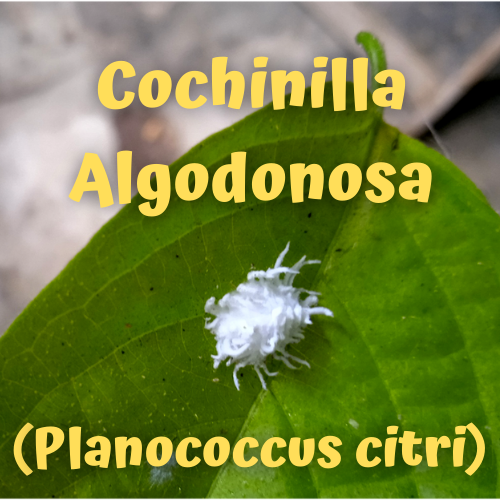
Weeks ago in this same community, I told you about my Trillolit (Combretum indicum) plant, which is a vine located in the center of the internal garden of my house. Since I can remember, this plant has never gotten sick, well, for about 5 years, it has had an infection by the mite known as White Louse (Pinnapis aspidistrae), but it is relatively mild; however, in the previous publication I had already mentioned the presence of some nocturnal butterflies that fluttered to one side of the plant, and then, in that same place, some of its branches withered; but, 15 days after the publication, I noticed with concern the appearance of another plague, which has already been present in my backyard. Here you can see my previous post:
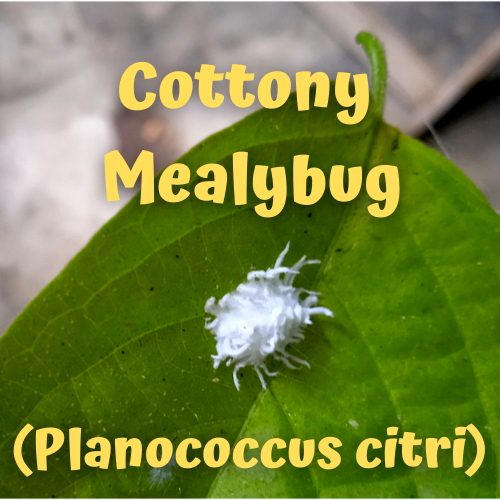

In the past, this pest had infested the largest currant bush on my backyard, (Phyllanthus acidus) ; however, on that occasion the infection was very important, to the point of having to strip the tree of each and every one of its leaves, since we used multiple insecticides, both natural and agrochemical, with total failure. However, this time the presence of this pest is almost catastrophic, to the point of having greatly reduced the vitality of the trillolit, absenting hummingbirds and bees from its flowers, which worries me a lot, because we are in season of drought and this plant is an important source of food for my bees
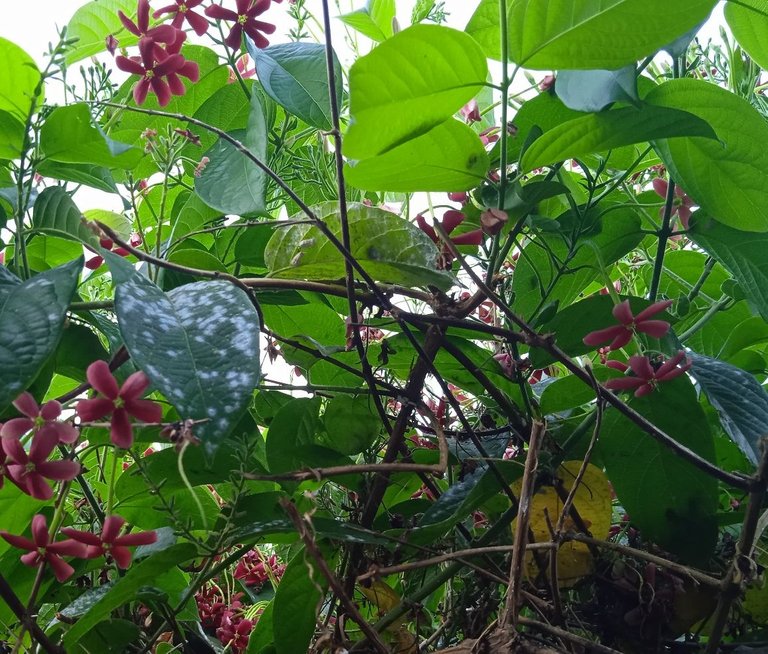

I asked my mother if the plant had gotten sick before, and she told me that it had never, which only increased my concern. And I am talking about an insect that seems to be taken from a comic or an alien movie, known as Cottony Mealybug (Planoccocus citri), an animal with great power of parasitization and destruction, because it reproduces very easily, which sucks the sap from the plant, subtracting its vital energy. Additionally, because it expels a sticky and sweet liquid, which is the excreted product of feeding on the vital fluid of the plant, it attracts ants and mites, it also becomes a breeding ground for certain fungi, thus producing a multiple infestation
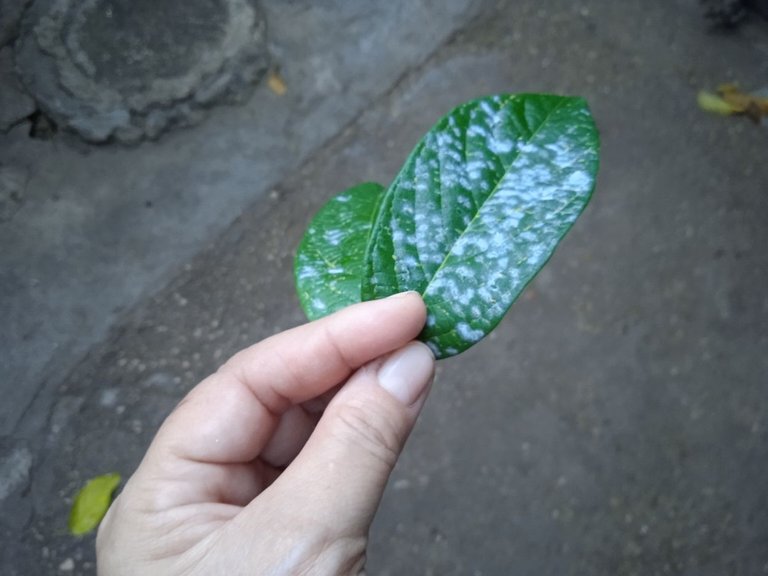

I have been documented in various electronic sources, (which I cite appropriately at the end of this post); in order to know what I am facing. Then I expose in a timely manner the general characteristics (physical and behavioral) of this insect. It is pertinent to indicate that I have not copied verbatim from such sources, but I have consulted them, which is why I acknowledge the contribution of each of these authors by including them in the list of references. Let's see what features this plague:
- Esta plaga es conocida también como cotonet, y esto se debe a su recubierta algodonosa. Esta misma capa, permite que cada hembra pueda poner 2.000 huevos, ya que hace con ella una especie de nido, en donde los oviposita. Ya ven por qué tienen tanto poder de destrucción.
- This pest is also known as cotonet, and this is due to its cottony coating. This same layer allows each female to lay 2,000 eggs, since she makes a kind of nest with it, where she oviposits them. You see why they have so much destructive power.
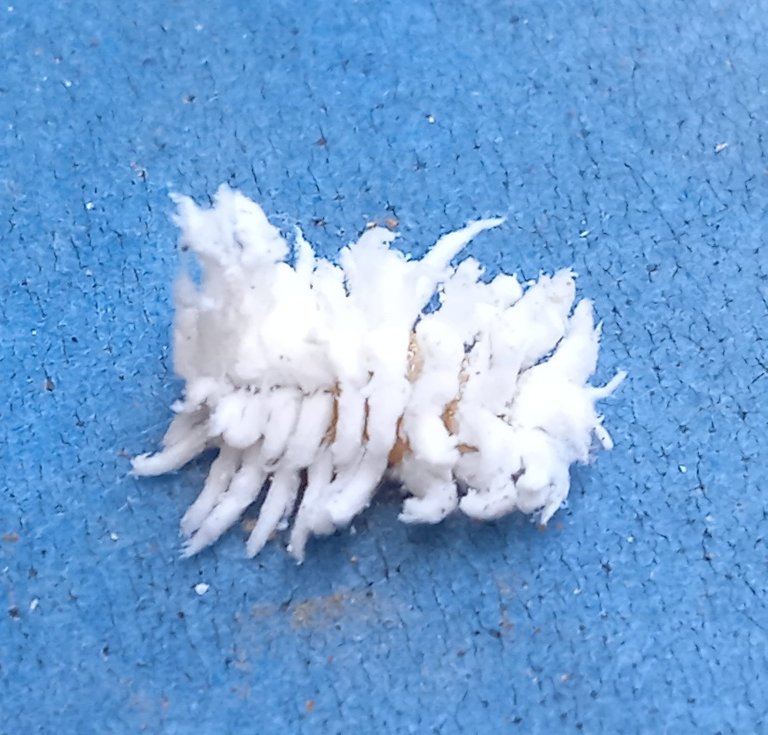
- El tamaño promedio es de 1 centímetro de longitud. Leí que existe diferenciación morfológica de acuerdo al sexo. Según la literatura consultada los machos tienen alas y las hembras carecen de ellas; aunque en estos no encontré esa característica. Si ví que unos insectos son más grandes y con formas más extrañas que otros. En las tres fotos que a continuación comparto, pueden ver a lo que me refiero: Uno parece una especie de langosta o escorpión, otros dos son cilíndricos y un cuarto es ovoide con una serie de apéndices saliendo de su superficie.
- The average size is 1 centimeter in length. I read that there is morphological differentiation according to sex. According to the literature consulted, males have wings and females lack them; although in these I did not find that characteristic. I did see that some insects are larger and with more strange shapes than others. In the three photos that I share below, you can see what I mean: One looks like a kind of lobster or scorpion, two others are cylindrical and a fourth is ovoid with a series of appendages coming out of its surface.

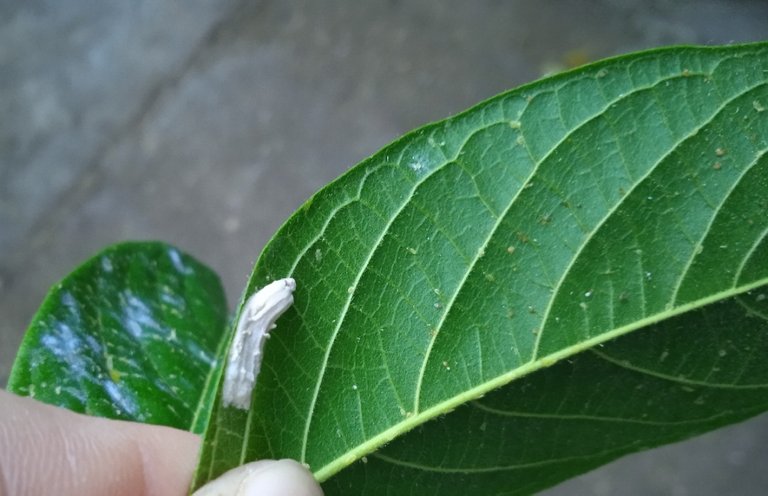
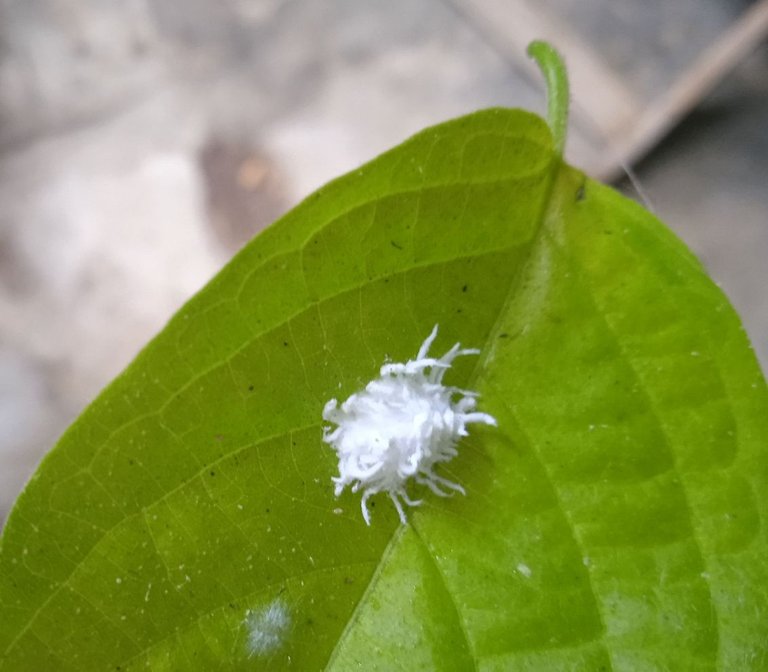
- Se adhieren a las plantas, extrayéndoles la savia y luego expelen un líquido pegajoso y dulce, aquí pueden ver las manchas en las hojas. Es muy desagradable al tacto.
- They adhere to the plants, extracting their sap and then they expel a sticky and sweet liquid, here you can see the spots on the leaves. It is very unpleasant to the touch.
- La planta va debilitándose progresivamente debido a la acción de los insectos. Las hojas se manchan y amarillean, las flores pierden su vitalidad, llegando incluso a morir.
- The plant progressively weakens due to the action of insects. The leaves become stained and yellow, the flowers lose their vitality, even dying.
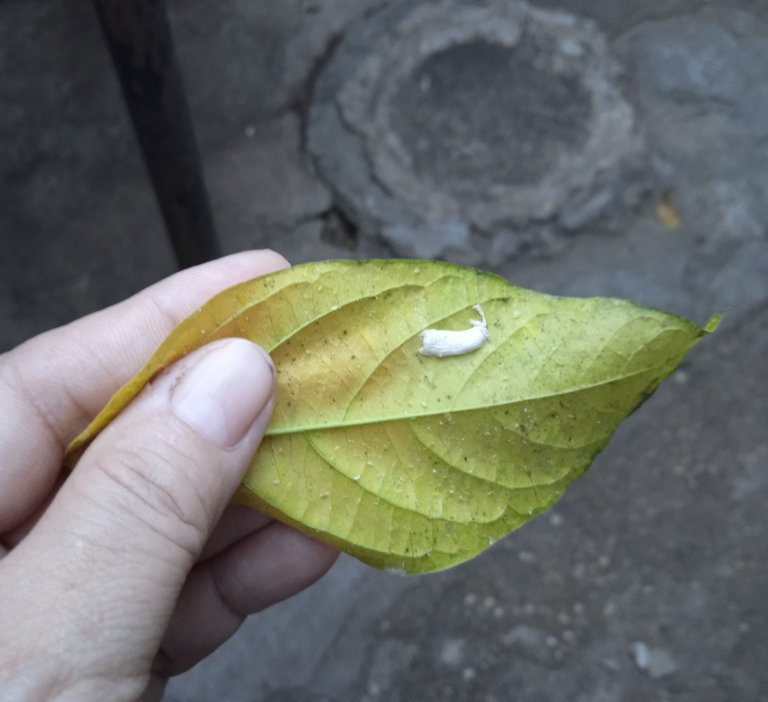

Currently we have reduced the size of the plant, pruning it as much as possible, since it is an umbrella and a natural refresher for my house, so that in these dry months I will not be able (as a last resort) to strip it of 100% of its branches and leaves. We have also sprinkled its foliage with baking soda diluted in water, (1 teaspoon per liter of water). Likewise, we have fertilized it rootwise with liquid humus, to strengthen it, and with urine, since it provides urea naturally; but these actions have been ineffective, day by day I see how less vital it is; which is why I developed a natural insecticide, which I will soon be sharing both its production process and later its effectiveness, (to this date I have not applied it or tested it, since it required a maceration process). If this is not enough, I will proceed to prune it and leave it at zero, only with its trunk or main branch.

Here I end my post today, which I did to publicize this insect, which, although it has its function within the ecosystem, can cause very significant damage to our beloved plants. I hope it is useful for everyone.

- Jardinedia (2020). ¿Cómo librarse fácilmente de la cochinilla algodonosa. Disponible en: https://www.jardinedia.com/cochinilla-algodonosa/#Como_prevenirla_eliminarla_y_combatirla
- Ecologiaverde (2021). Eliminar la cochinilla algodosa, tratamiento y remedios caseros. Disponible en: https://www.ecologiaverde.com/eliminar-la-cochinilla-algodonosa-tratamiento-y-remedios-caseros-2126.html
- Jardinería, Plantas y Flores (s/f). Tipos de Cochinillas y cómo combatirlas. Disponible en: https://jardineriaplantasyflores.com/tipos-de-cochinillas-y-como-combatirlas/
Todas las fotos de este post son de mi autoría y fueron tomadas con mi teléfono Xiomi REDMI 8 A // These photos are my own, and were taken with a Xiomi REDMI 8 A phone
Los divisores son cortesía de @eve66 quien comparte bellos diseños que embellecen el maquetado de nuestras publicaciones. // The dividers used are courtesy of @eve66 who shares beautiful designs that embellish the layout of our post.
En caso de que se requiera utilizar el contenido o las imágenes de este post y de mis otras publicaciones, agradecería que se hiciera referencia a mi autoría (Fabiola Martínez) y se citara el enlace correspondiente. Gracias. // In case it is required to use the content or images of this post and of my other publications, I would appreciate if you could refer to my authorship (Fabiola Martínez) and cite the corresponding link. Thanks.

 You've been curated by @plantpoweronhive! Powered by LOTUS token, an alternative health social currency on HIVE. Delegations welcome!
You've been curated by @plantpoweronhive! Powered by LOTUS token, an alternative health social currency on HIVE. Delegations welcome!

Bicho esa planta es terrible!!🤔
Muy interesante tu artículo, aunque no es bueno que tú planta este enferma por esta plaga, como dice el dicho "todos los días se aprende algo nuevo", ojalá ese insecticida le sirva. 🤍🌻
Gracias por pasar a leer y comentar @ladiadema, sí, es un problema que la planta esté enferma, especialmente porque jamás había enfermado, y es una planta de casi 80 años de edad, además, es parte vital de la casa, pues es el corazón de la casa, está ubicada en todo el centro. Yo también espero que ese insecticida sea efectivo, esperemos a ver. Saludos.
Oh, that is some nasty bug infesting your plants. I have not seen them here in our area. I hope you are able to control or eradicate them.
Hi, thanks for stopping by to read and comment. I hope you never have of these bugs in your area, they are really nasty and harmful.
my mango and avocado plants have experienced pest and caterpillar attacks like this, I collect dried banana leaves and coconut husks (dry brown skin of coconut) then burn them to produce smoke, I burn them around the affected trees for a week, so that my trees come back fresh free of pests, I hope you try it @sirenahippie
Thank you very much for the advice @umirais, I don't think I can do it, because this plant is inside my house, next to the living room and I think the smoke could hurt me (I suffer from allergies), but I will see if at some point, that I am not not at home, my husband can do it. Greetings.
I hope you can get the bugs under control!
I've seen a few bugs like that last summer and wondered what they were, now I know.
Hello, these bugs are very destructive. It is good that you remove the leaves that are infested before they reproduce more. Some species are hermaphrodites, just like snails, so they can also reproduce a lot, and if only one is left, it is capable of making a large area sick. Thanks for stopping by to read and comment. Regards.
I also got lots of cottony pests on all of my red chili pepper crops (all 8 of them). I tried a type of pesticide on them but they did not die, I guess I used the wrong one.
Ohhh, that's unfortunate to know. I'm going to try a natural insecticide, I can't use agrochemicals, because the melipona bees I have feed on this plant, so I would kill them if I use those products. I will be posting soon. Thanks for stopping by to read and comment.
You're welcome, I am trying to find a natural way of eliminating them without the use of chemicals.
Ciertamente esos bichitos parecen unos aliens blancos, me dio escalofríos verlos. Justo estoy preparando un post para mi #GardenJournal que es sobre los insectos en mi jardín, aunque el problema del que hablaré son las hormigas.
Es difícil cuidar las plantas, podarlas sin que sufran daños irreparables, o se enfermen y puedan recuperarse, y también controlar a las plagas como ésta de una manera ecológica y no tan abrasiva, porque como bien lo has dicho, cada cosa tiene su propio lugar en el ecosistema y la cadena alimenticia. Aunque claramente algunas especies vegetales y/o animales a veces se salen de control, se desajustan por los cambios climáticos y factores humanos.
Espero que te puedas deshacer de esos algodonosos tan molestos y tus plantas sobrevivan.
Discupa que te responda tan tardíamente. En el caso de mi planta, creo que hay un desbalance energético. Ella está en el corazón de la casa, y pudiera decirse que es el corazón de la casa, y últimamente ha estado algo vulnerable. Yo también espero que pueda eliminar esta molesta plaga y fortalecerla. Gracias por pasar a leer y comentar. Un gran abrazo.
Congratulations @sirenahippie! You have completed the following achievement on the Hive blockchain and have been rewarded with new badge(s):
Your next target is to reach 10000 upvotes.
You can view your badges on your board and compare yourself to others in the Ranking
If you no longer want to receive notifications, reply to this comment with the word
STOPCheck out the last post from @hivebuzz:
Support the HiveBuzz project. Vote for our proposal!